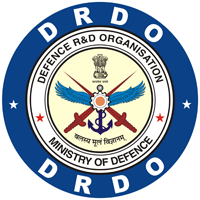Biological Enrichment of Hippophae rhamnoides L. (Seabuckthorn) Through Microbial Interventions and Exploring the Probable Role of Plant Growth-Promoting Bacteria from Termite Mounds
DOI:
https://doi.org/10.14429/dlsj.21471Keywords:
Hippophae, Seabuckthorn, Termite, Plant growth-promoting bacteriaAbstract
Seabuckthorn (Hippophae rhamnoides L.) is an economically significant shrub, renowned for its oil, containingover 100 bioactive compounds. Phytochemical studies have reported numerous constituents for biomedical applicationshaving nutraceutical and therapeutic properties. However, oil content in the current cultivars is below optimal level.Traditional methods of breeding, employed to reach optimal level are resource-intensive and time-consuming. Asustainable alternative, organic farming has resurfaced with its integration with beneficial soil micro-fauna whichprovides an eco-friendly approach in enhancing crop quality and productivity conventional agricultural practices.Amidst these, Plant Growth-Promoting Bacteria (PGPB) is one promising option. PGPB enhance phytohormoneproduction, nutrient uptake, and secondary metabolites by activating plant’s natural immune response. Few bacteriahave been explored in the rhizospheric soil of Hippophae sp. to enhance its metabolite production. This paperreviews researches done on the PGPB associated with Hippophae sp. and explores the novel idea of using termitemound or termite gut bacteria that could catalyse the production of bioactive content. Termites and their moundsfoster a diverse and underexplored microbiota of PGPB which could promote production of phytohormones andact as a biocontrol agent against pathogens of Hippophae sp. The role of such microbes being used as bio-fertiliserin several plant species gives a new prospect in improving the livelihood of high-altitude farmers, simultaneouslycontributing to sustainable agricultural practices
Downloads
Published
How to Cite
Issue
Section
License
Copyright (c) 2025 Defence Scientific Information & Documentation Centre (DESIDOC)where otherwise noted, the Articles on this site are licensed under Creative Commons License: CC Attribution-Noncommercial-No Derivative Works 2.5 India

